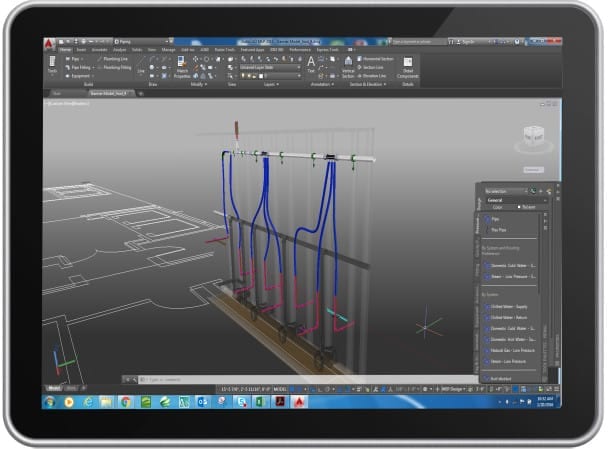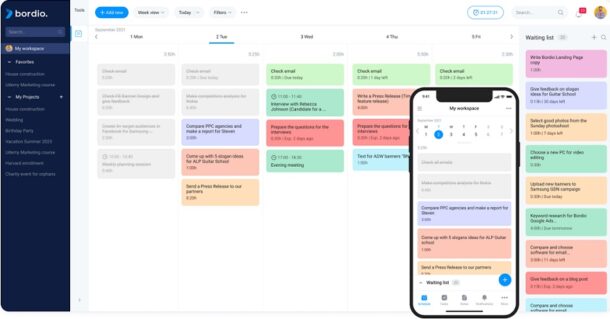As technology continues to evolve, the construction industry has not been left behind. With numerous digital tools available to constructors, work is now faster, easier, and more efficient. In this article, we will take a look at some of the best digital tools for constructors.
These tools are designed to help constructors to streamline their work processes and ultimately deliver high-quality projects.

Building Information Modeling (BIM) Software
BIM software is one of the most useful digital tools for constructors. This software allows constructors to create 3D models of their projects, giving them a more detailed understanding of how everything will fit together. BIM software also helps constructors to visualize and identify potential issues before construction begins. Examples of popular BIM software include Autodesk Revit, ArchiCAD, and Autodesk BIM 360.
- Autodesk Revit allows users to design and model buildings in 3D, with tools for creating plans, sections, elevations, and construction details.
- ArchiCAD handles complex geometries and curved shapes with ease. ArchiCAD also offers a range of tools for design and documentation, as well as features for collaboration and data management.
- Autodesk BIM 360 – A construction management software that is designed for construction project teams. It provides tools for project management, design coordination, and construction document management.
Project Management Software
Project management software is another digital tool that has become essential for constructors. This software helps constructors to manage all aspects of their projects, including scheduling, budgeting, and tracking progress. Here are some of the most popular project management software tools available:
- Bordio – With Bordio, you can create and assign tasks to team members, set deadlines, and track progress in real-time. The platform also allows you to track the time spent on each task and generate detailed reports on project performance and productivity.
- Asana – A popular project management software that allows users to create and manage projects, track progress, and assign tasks to team members. It also provides tools for collaboration and communication.
- Trello – A visual project management tool that uses boards, lists, and cards to organize and track tasks and projects. It provides an intuitive interface and simple task management features.
- Basecamp – A web-based project management tool that allows teams to manage projects, share files and messages, and track progress in real-time.
- Microsoft Project – A project management software that allows users to plan, track, and manage their projects. It provides a wide range of features, including Gantt charts, project timelines, and resource management.
- com – A flexible project management software that allows users to manage projects, tasks, and workflows. It provides customizable project boards and collaboration tools.
- Wrike – A cloud-based project management software that provides tools for project planning, task management, and collaboration. It allows teams to manage projects and track progress in real-time.
- Smartsheet – A collaborative work management platform that provides tools for project and task management, resource management, and team collaboration. It allows teams to manage projects and track progress in real-time.

Field Service Management Software
Field service management software is designed to help constructors manage their field service teams. It includes features such as scheduling, dispatching, work order management, and invoicing. Examples of field service management software include ServiceTitan and Workiz.
- Workiz helps businesses manage their scheduling, dispatching, and billing needs. It offers features such as job tracking, invoicing, GPS tracking, and customer communication. Workiz also offers a mobile app, allowing technicians to view their schedules, manage jobs, and communicate with customers while on the go.
- ServiceTitan is a comprehensive platform that helps service businesses manage their operations, including scheduling, dispatching, invoicing, payments, and more. It provides real-time updates, customizable reporting, and automation features to help service companies streamline their workflows and improve their customer experience.
Construction accounting software is designed to help constructors manage their finances. It includes features such as invoicing, accounts payable, accounts receivable, and payroll. Examples of construction accounting software include QuickBooks and FreshBooks.
- FreshBooks is a cloud-based accounting software solution that offers invoicing, expense tracking, time tracking, and project management features. It is designed specifically for service-based small businesses, such as freelancers, consultants, and creative professionals.
- QuickBooks is a comprehensive accounting software solution that offers a range of features, including invoicing, expense tracking, payroll, inventory management, and more. It offers both desktop and cloud-based solutions and is popular among small to medium-sized businesses.
Collaboration Software
Collaboration software enables constructors to work together on documents and projects in real-time, regardless of location. It allows for easy communication and file sharing, making it easier for teams to work together on complex projects. Examples of collaboration software include Microsoft Teams and Google Drive.
- Google Drive is a cloud-based file storage and sharing platform designed to help individuals and teams easily store, access, and share files from anywhere with an internet connection. It includes Google Docs, Sheets, and Slides, which are similar to Microsoft Word, Excel, and PowerPoint.
- Microsoft Teams is a collaboration and communication tool that is designed for teamwork and group projects. Teams allows team members to collaborate in real-time on projects, share files, hold video and audio meetings, and chat with one another.
How to use a construction software tool
The specific steps for using a construction software tool will depend on the tool in question. However, here are some general steps that you can follow to use a construction software tool:
Research the software:
First, you should research the software you want to use. Look for reviews and ratings from other users, and consider factors such as the features, pricing, and user-friendliness of the software.
Install or sign up for the software:
Once you have selected a software tool, you may need to download and install it on your computer or device. Alternatively, you may need to sign up for an account on a web-based software tool.
Familiarize yourself with the software:
Once you have installed or signed up for the software, take some time to familiarize yourself with the features and functionality of the tool. This may involve reading the user manual or watching tutorial videos.
Set up your project:
Most construction software tools will require you to set up your project before you can begin using the software. This may involve creating a project timeline, setting budgets and goals, and assigning team members to different tasks.
Use the software to manage your project:
With your project set up, you can begin using the software to manage your project. This may involve using features such as scheduling tools, cost estimating tools, or collaboration tools to keep your project on track.
Update the software regularly:
Finally, be sure to update the software regularly to ensure that you have access to the latest features and bug fixes. Many software tools will automatically update, but you may need to check for updates manually from time to time.
By following these steps, you can begin using a construction software tool to manage your project more efficiently and effectively. Remember, it’s important to choose the right software for your needs and take the time to learn how to use it effectively.




Join the conversation: